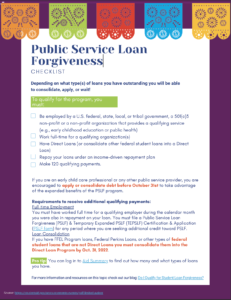What to Look Out for and How to Get Support

Disclaimer: Information from this blog is not for diagnosing purposes.
Have you noticed discourse and awareness of autism has skyrocketed? Parents and caregivers have been sharing their stories, building community, and advocating for their families. Through groups like Autism Speaks, families are able to get more support than ever before.
Although a child with autism can usually be diagnosed by the time they’re two to three years old, signs can develop even earlier. Because of this, Autism Speaks says, “One of the most important things you can do as a parent or caregiver is to learn the early signs of autism and become familiar with the developmental milestones that your child should be reaching."
Signs and Symptoms
According to the Centers for Disease Control, autism affects an estimated 1 in 36 children in the United States today. But first, what is autism spectrum disorder? Autism Speaks details autism as “a broad range of conditions characterized by challenges with social skills, repetitive behaviors, speech and nonverbal communication.” We know that autism looks different for every person who has it, and not everyone has the same signs, but there are some telltale signs to look out for.
Autism Speaks has detailed that by six months old, a baby with autism will have few big smiles or other warm and engaging expressions. They may have limited or no eye contact with parents or others. By nine months old, a child may not have a back-and-forth sharing of sounds, smiles, or other facial expressions. By 12 months old, there may be little or no babbling, back-and-forth gestures like pointing, showing, or reaching, and little or no response to their name. By 24 months old, they may have very few or no meaningful, two-word phrases.
Other signs and symptoms include:
- Loss of previously acquired speech, babbling, or social skills
- Avoids eye contact
- Prefers alone time
- Trouble understanding others’ feelings
- Delayed language development, and repeating words or phrases consistently
- Behaviors like flapping, rocking, spinning
- Difficulty adjusting to minor changes in routine or surroundings
- Hyperfixation on one interest
Autism Speaks highlights that knowing this information is essential to your child’s development because some people with Autism Spectrum Disorder (ASD) may require “significant support in their daily lives, while others may need less support and, in some cases, live entirely independently.” Research from Autism Speaks shows that “early intervention leads to positive outcomes later in life.” Staying vigilant will give your child the best possible chance at living a fulfilling and rich life.
Thanks to increased awareness, de-stigmatization has helped diagnose autism earlier. Keep in mind that often women are diagnosed with autism later in life because of differences in behavior compared to young boys and men. According to the Autism Research Institute, “Findings revealed that about two-thirds of females were diagnosed over the age of 18.” Early diagnosis is key, especially for women. The Autism Research Institute finds that earlier diagnosis is associated with better life outcomes."
Autism Resources
If you have noticed symptoms in your child or yourself, there are many resources for parents, caregivers, and people with autism. Remember, it’s always good to talk to a doctor if you notice these signs in yourself, or your child. Here are some resources from the Center for Disease Control:
- The Department of Education (ED) has resources to assist with the educational needs of children with autism spectrum disorders and other disabilities. The ED’s Special Education Technical Assistance and Dissemination Network links to a variety of websites and online resources that focus on special education issues, such as policy, technology, curriculum, and parent trainings. In addition, the Office of Special Education and Rehabilitative Services (OSERS) within the ED has resources for parents and individuals, school districts, and states in the areas of special education, vocational rehabilitation, and research.
Health Children by the American Academy of Pediatrics







